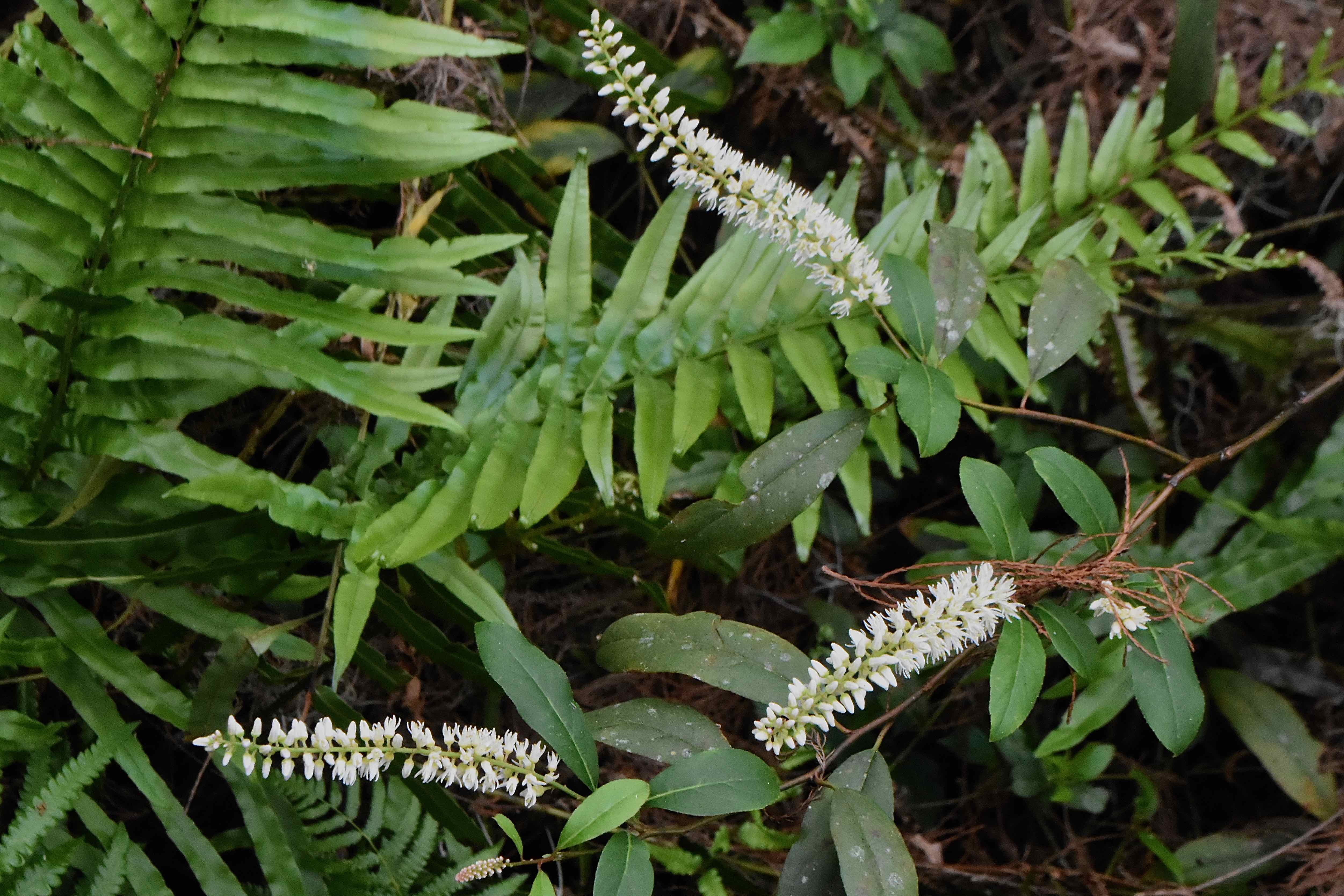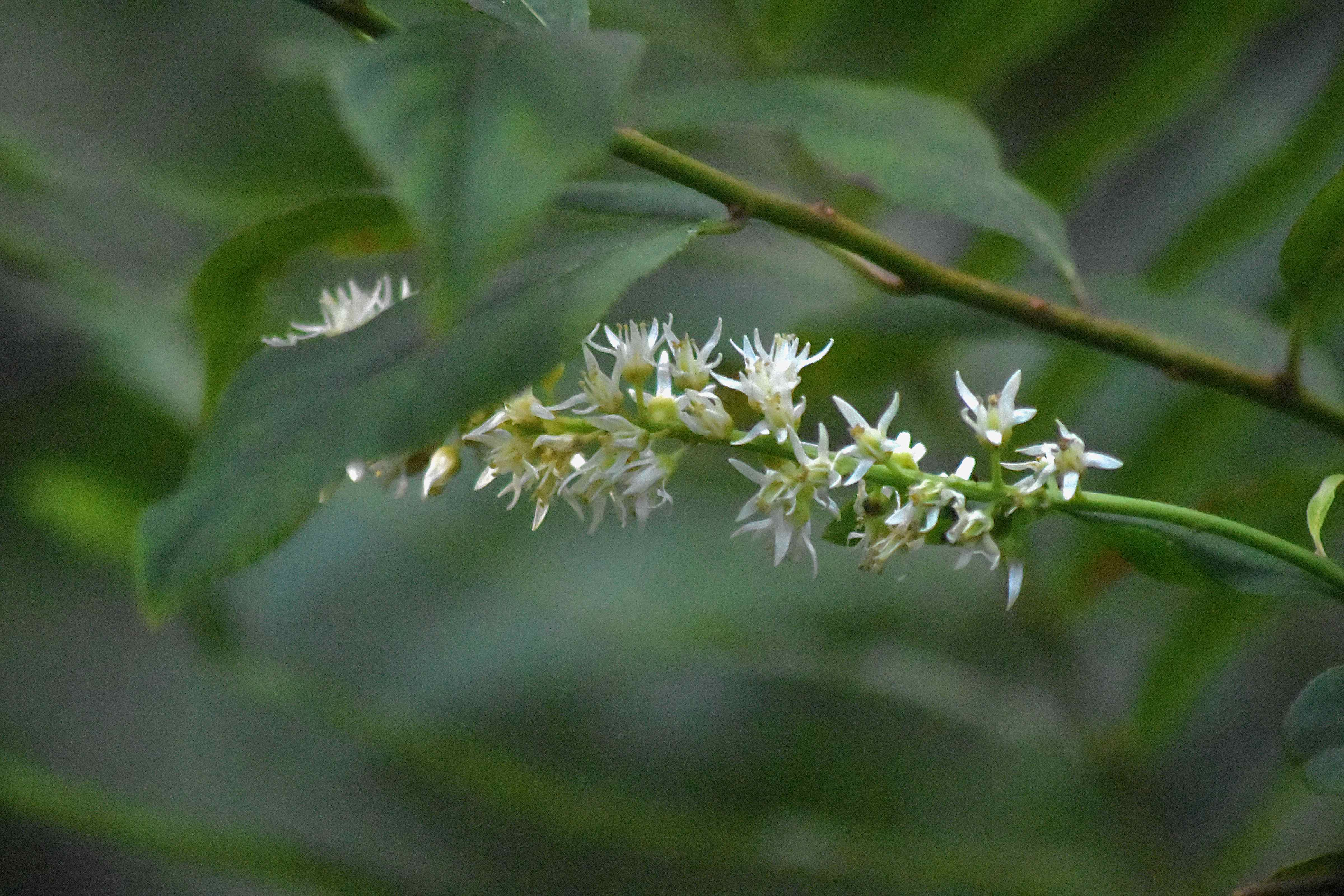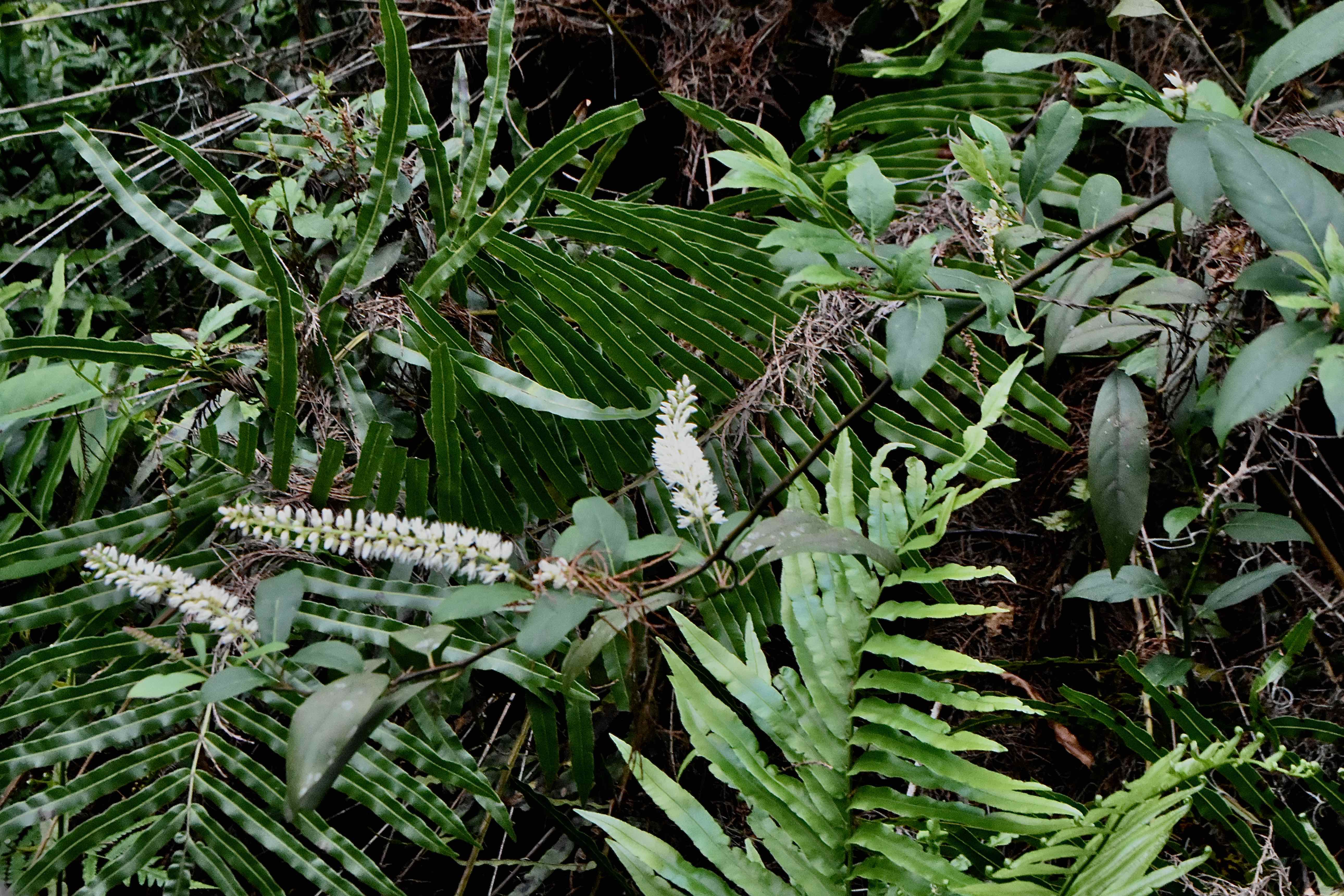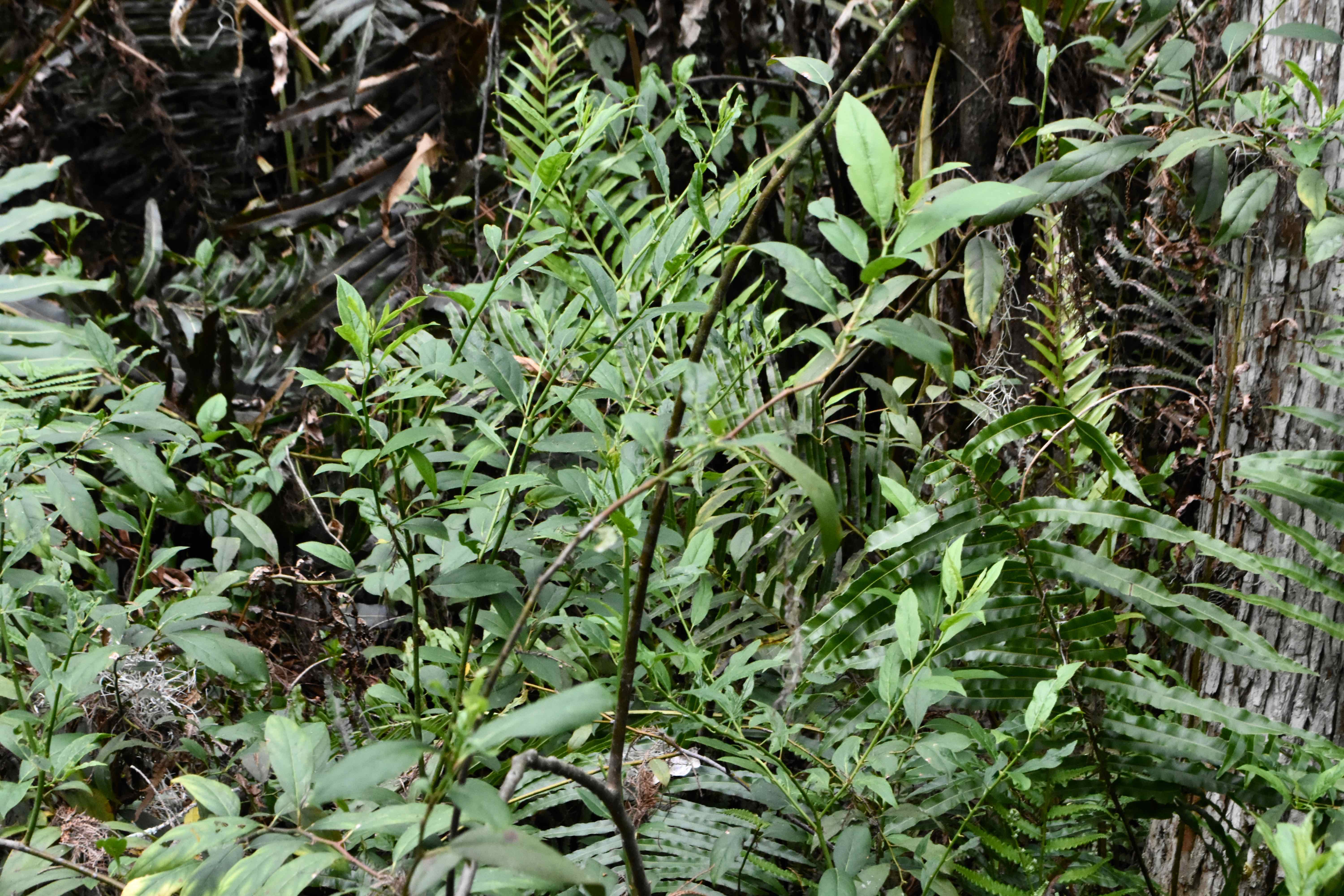
Virginia Willow, photographed at Loxahatchee National Wildlife Refuge, Boynton Beach, Palm Beach County, in March 2017.
Virginia willow, Itea virginica, is not a willow. Just slightly resembles one. It can produce spectacular foliage in the fall and early winter. Just not here in South Florida, where it kind of blends into the background for most of the year until those bottlebrush-like blooms appear in spring. Aggressively nondescript, we'd call it.
And it's a bit of a puzzle for taxonomists, listed by one source or another as a member of at least four, count 'em, four separate plant families.
Virginia willow is Florida native, rare here in the southern end of the Sunshine State, but found in almost every county north of Lake Okeechobee. Its native range extends as far north as Pennsylvania, west to Missouri and south into Texas. It is believed to be extirpated, or locally extinct, within Pennsylvania; Indiana lists it as endangered.
It is a shrub reaching perhaps as tall as 10 feet here in South Florida, shorter elsewhere. It will have with multiple branches but not densely so. Leaves are alternate on the stem, two to four inches long and somewhat eliptical in shape. They also have a fine serration along the edges.
Virginia willow flowers in spring and early summer, but the timing can vary according to where it's growing — we found it beginning to bloom in late March and early April, but up north it could be as late as June and July. The flowers are small, white and grow on "shoots," technically called racemes, that can be as long as six inches. New flowers are produced as the raceme grows. In colder climes, the leaves turn various reds, oranges and yellow, spectacularly so as summer turns to fall and fall into winter. But here at the extreme southern end of Virginia willow's range, it's pretty much an evergreen.
Virginia willow likes wet places — freshwater swamps, wet hammocks and stream banks. We found it growing in the cypress swamp at Loxahatchee National Wildlife Refuge. It prefers full to part sun; it doesn't tolerate drought or salt.
It is a nectar plant for butterflies and other insects; it provides nesting and cover for birds and other animals. We humans mainly use Virginia willow as a landscape plant, in natural settings and restorations, as an accent plant and along stream beds to control erosion. It can be grown from seed or from cuttings.
There are several cultivated varieties commercially available around the country, including Henry's Garnet, Little Henry's and Merlot, so-called because of the deep red foliage that appears in the fall. According to some, the popularity of the cultivated varieties might be expanding Virginia willow's range.
And by the way, the genus name, Itea, comes from the Greek word for willow, despite the fact that it isn't a willow. Other commons names: Virginia sweetspire and Virginia tea. As as said above, there is no consensus as to which family Virginia willow belongs. Various candidates we've come across: Escalloniaceae (the Institute for Regional Conservation), Grossulariaceae (the U.S. Department of Agriculture), Iteaceae, and Saxifragaceae.
Click on photo for larger image
Links for Virginia Willow



